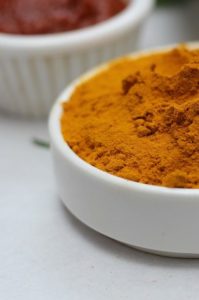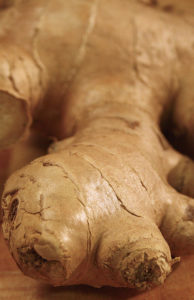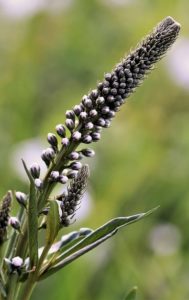21 Best Herbal Remedies For Joint Pain

Joint pain isn’t a condition that goes away on its own.
In most cases – you have to follow serious treatments for a long time. But fortunately – there are alternatives.
For this reason, I want to introduce you the best 21 herbal remedies for joint pain that I’ve tried.
And don’t worry – they’re not exotic plants, just regular herbs that you can find in most drug stores
#1 – Turmeric
If I had to make a list of the herbs used in arthritis, Turmeric would surely be #1.

Who hasn’t heard of it and of its beneficial effects in joint pain? Probably someone who never suffered from it. Turmeric root contains a substance called curcumin, that is responsible for its amazing proprieties in inflammation.
- Curcumin doesn’t appear in high quantities in the plant itself
- You can mostly find it only in the roots.
- That’s why we only use the root powder.
- Leaves infusion is totally useless.
There were hundreds of studies and clinical trials that used Turmeric, especially in the last 20 years.
The conclusions were mostly the same – Turmeric’s effect make it probably the best herb for arthritis:
- reduces inflammation and pain considerably
- also treats joint stiffness
So if you ever have to choose only one natural herb for your joint pain, choose Turmeric. Its benefits are above any other plant’s.
#2 – Licorice
Here’s an interesting fact about this herb – it is used as a natural sweetener in sugar-free products.
So additional to its arthritis benefits – you can use it to sweeten your natural smoothies or deserts.
Getting back to our story, licorice’s great effects on joint pain are because of glycyrrhizin:
- reduces inflammatory pain
- makes your body produce more cortisol
Now – what exactly does cortisol have to do with pain?
Well – it’s a hormone that suppresses the immunity. That might sound bad, but if you’re dealing with an auto-immune arthritis, immunity suppression causes less pain and less inflammation.
However, licorice can be toxic at high doses, and it also comes with some precautions:
- It can increase blood pressure.
- It’s not recommended to people with heart problems.
But if you follow the recommended dose, this herb should only help.
#3 – Arnica
This is one of the most popular herbs for swollen joints. So if you haven’t heard of it before – remember this name.

Arnica has such powerful effects that it’s considered a toxic plant. For this reason, it is almost never taken as pills, by mouth.
But as harmful as it is on the inside, it’s a miracle-maker on the outside.
There are dozens of forms – gels, creams, sprays, tinctures and even oils, all made to be applied on the skin.
The effects of Arnica creams are very powerful – and that’s the reason why it’s one of the most used herbs in inflammation. It has amazing benefits in:
- auto-immune arthritis
- osteoarthritis
- gout
- even temporary joint pain
Just apply it on the painful spot and you can literally feel how the pain decreases with every minute.
There is also a precaution – never apply Arnica products on open wounds. In this way, the dangerous substances would end up in your body, and they can be very toxic.
#4 – Feverfew
If you happen to be a chronic migraine sufferer, you surely heard of this herb.

Feverfew has been used for centuries in antic Greece – where people discovered its anti-inflammatory proprieties.
- It showed great results in headaches caused by inflammation.
- Lately, people started using it in joint problems as well.
Though it’s not a popular herb in joint pain (like Arnica or Turmeric), Feverfew does have important benefits for this condition:
- Contains substances that decrease prostaglandins level.
- These are responsible for pain and inflammation in our body.
- So it can indirectly calm down inflammatory pain.
Feverfew leaves are dried out for a few weeks, and then used to make a powder.
This is how you can find it in every pharmacy or drug store.
#5 – Boswellia
Boswellia is a tree from the north of Africa, with a very particular flavor. But it’s not its nice smell that is used in medicine.
It’s actually the resin of Boswellia – which is some kind of gum produced by the bark of this tree:
- It’s left to dry out first.
- Afterwards, it’s collected and used for its anti-inflammatory proprieties.
- Boswellia contains terpenes, which are strong anti-inflammatory.
Surprisingly or not, this herb has one of the best effects when it comes to arthritis:
- manages to reduce the pain by decreasing the inflammation
- it has no serious side effects
Compared to the classic prednisone – this sounds like heaven, doesn’t it?
Unfortunately, these things are not official yet, because Boswellia extracts are still studied.
But if you think this herb is exotic and you can only find it in the far East, you’re totally wrong.
Boswellia extracts or combinations are available in most drug stores, as over the counter supplements.
#7 – Celery
Our everyday celery has amazing effects in arthritis and joint pain.

The explanation is simple:
- Celery contains a substance called luteolin.
- This ingredient was proved to fight against inflammation.
As joint pain is all about inflammation – eating a lot of celery gradually decreases the inflammation and consequently, the pain.
Besides, celery has even more benefits in gout:
- also has diuretic proprieties
- which means it will make your body eliminate more water
- but also, your body will eliminate the harmful uric acid too
You can consume celery in any form, but I personally recommend juicing it. It’s the best way to eat a higher quantity in a tastier form.
#8 – Devil’s Claw
Unlike its weird name – this herb has incredible benefits in joint pain.

If you ever checked out the ingredients of pain relieving supplements – you surely heard of it by now.
A few centuries back, this herb was brought to Europe from the African desert.
From that time, it has been used in all kinds of pain, but its effect in treating joint pain was soon highlighted:
- The root of Devil’s claw contains a very high percent of iridoid glucosides.
- These substances reduce inflammation and soothe the pain.
Just like Tumeric, there were a lot of studies on Devil’s claw, all with the same results:
- this herb does reduce joint pain visibly
- it can even replace classic therapy in easier forms
But it’s not all about joint pain. Some unofficial studies showed that Devil’s claw has incredible effects in osteoporosis – it can prevent bone loss in time.
#9 – Nettle
Common nettles also have a good effect in arthritis and joint pain (besides their 100 other benefits).

You may not know it, but nettles contain a very high quantity of minerals:
- calcium
- potassium
- magnesium and many others
For someone suffering from gout, these are excellent news.
In gout, these minerals usually have a lower level – so consuming foods rich in these compounds is a must.
Besides, nettles have diuretic proprieties:
- This means they promote water elimination.
- Together with water, uric acid crystals are also eliminated.
Nettles also contain substances that stop the inflammation process, by suppressing several cytokines.
However, the extracts didn’t show an amazing effect in auto-immune arthritis, only is osteoarthritis (a non-immune form).
The good news is that you don’t necessarily have to take nettle-based pills. Leaves infusion or tinctures are easier and tastier solutions.
#10 – Juniper
Have you ever imagined that juniper gin could have anything to do with joint pain? I certainly haven’t.
Juniper berries are known to have an anti-inflammatory themselves.
However – many people claim that soaking juniper raisins in gin has visibly relieved their joint pain.
Now, there are not real studies on this topic, but it does make sense. If the gin is flavored with real juniper berries, it should be transferred some of their anti-inflammatory proprieties.
However, alcohol can worsen joint pain sometimes, so I would rather recommend 2 other things:
- either eat a few berries everyday (but make sure you buy them from a shop, because some species are toxic)
- or use juniper-based gels and creams
Both options should improve your pain over time.
#11 – Cayenne Pepper
 Here’s another top herb when it comes to popularity.
Here’s another top herb when it comes to popularity.
Every arthritis sufferer probably knows about the benefits of hot pepper, and how fast it can bring relief – right?
What Cayenne brings different from the other herbs is that it doesn’t have anti-inflammatory proprieties. Instead:
- It calms down the pain mechanically.
- Works by preventing the pain signals from getting to the nerves.
- In this way, the inflammation remains but your brain doesn’t feel the pain anymore.
- That’s something like anesthesia.
Among all the useful substances from Cayenne, there is one that stands out – capsaicin, which is responsible for the pain-killing effect.
There were many studies on Cayenne, especially on capsaicin, and they all reached the same conclusions.
Hot pepper does have important analgesic effects. And because it’s only applied on the skin:
- it’s not toxic
- it doesn’t have any side effects
Plus, the results can appear in just a few days – so keep this herb in mind next time your joint pain comes up.
#12 – Aswaghanda
This is one of the less popular herbs from this list.
Well – Aswaghanda is a herb from the same family with tomatoes, but it has totally different proprieties.
Aswagandha is known since ancient times. There’s no surprise people would use it in traditional medicine ever since. And they turned out to be right.
Recent studies showed that Aswagandha consumption reduces the production of cortisol, the inflammation hormone.
Whether you have arthritis, joint pain or lupus, a daily dose of Aswaghanda alone should decrease your pain after a while. If you associate it with other herbs with similar proprieties, the effects will be even better.
Like most of the other plants, you will usually find Aswaghanda as powder or in combination with other “miracle” herbs like Tumeric or Boswellia.
#13 – Ginger
Ginger is probably one of the herbs good for everything – nausea, digestive problems, infections.

There’s no surprise it was proved to have anti-inflammatory proprieties as well.
Gingerols and shogaols, two of the most important substances from ginger – can fight back the inflammation and soothe the pain.
But here’s what makes ginger different from the classic therapy:
- doesn’t produce any side effects
- many additional benefits (not just for pain)
However, it is a bit dangerous for people taking blood-thinning medication. So if that’s your case, ask your doctor’s advice before consuming any ginger.
But if you’re sick of taking pills over pills, there’s are better solutions:
- You can find fresh ginger in most shops.
- You can eat it raw or use or for tea.
- Also, there are local creams, tinctures or essential oils that are even easier to use.
#14 – Dandelion
Believe it or not, dandelion leaves can soothe arthritis pain and calm down swollen joints.
It’s probably the most surprising herb from that list, but it can be a miraculous cure.
Young leaves of dandelion contains lots of minerals and vitamins – like:
- zinc
- potassium
- a lot of vitamins
These substances are extremely helpful in gout, where your body needs extra nutritive molecules.
Not to mention that dandelion also has diuretic proprieties – so eliminating the uric acid will be easier and faster.
Besides gout, young dandelion leaves can also calm down regular joint pain:
- You can use these leaves in salads or different meals.
- Make sure you eat them fresh.
- You can also try dandelion infusion, but once again make sure the leaves are fresh.
#15 – Flax
 One of the best things you can do to cure inflammation is to increase the intake of fatty acids. And one of the best herbs you can use for this purpose are flax seeds.
One of the best things you can do to cure inflammation is to increase the intake of fatty acids. And one of the best herbs you can use for this purpose are flax seeds.
Besides these Omega 3 fatty acids – this herb also contains lignans and fibers, both reducing the risk of cancer.
But here’s an interesting fact:
Only a tablespoon of flax seeds contains about 70% of the fatty acids necessary to reduce inflammation.
If you don’t like eating the seeds alone, you can try flax seed oil – which has exactly the same benefits.
Plus, there are hundreds of natural supplements that contain a certain quantity of flax seeds.
#16 – Cat’s Claw
It might have a funny name – but this herb is one of the oldest when it comes to traditional medicine.
Cat’s claw has been used ever since ancient times, thanks to its anti-inflammatory proprieties.
Though it’s not one of the most studied plants, its benefits have been confirmed by lots of people. You can take as:
- capsules or tables or
- use the powder directly, for infusion
However, there are a few warning signs. If you want to buy this herb:
- Read the ingredients carefully.
- Choose only the ones containing Uncaria Tomentosa.
- There are many other herbs named Cat’s Claw, and they actually have nothing to do with it.
- Also, don’t take this herb if you have auto-immune arthritis.
- It’s an immunity boost, and you know what this means in an auto-immune condition.
#17 – White Willow
If you were ever looking for a natural aspirin, the bark of willow is probably the best candidate.
- this herb is rich in salicin
- that’s a substance very similar to aspirin
Just like its much more famous cousin, salicin has amazing proprieties in inflammation and soothing the pain.
Besides, the willow bark also contains flavonoids – which can make wonders in inflammation.
So if you put together two substances that can soothe pain and calm down inflammation, what can go wrong?
- High doses of willow bark won’t do you too much good.
- Just like aspirin, it can cause digestive problems.
But if you respect the regular doses, willow bark is a much better alternative to aspirin (especially on the long term).
#18 – Aloe Vera
Tell me something Aloe Vera isn’t good for:
 it heals wounds
it heals wounds- it treats infections
- and it seems that it also decreases inflammation
Aloe Vera contains such a multitude of substances, that it’s hard to name one with the best anti-inflammatory proprieties.
Instead, I would say it’s their association that brings benefits to swollen joints.
There are 2 ways to use this herb in joint pain:
- either apply it locally
- or drink it
If you ask me, I would recommend the first. Applying the gel from the leaves directly on the painful spot can’t cause you any harm.
Instead, if you choose to drink the leaves’ juice, there are a few restrictions:
- Don’t drink it for more than 3 weeks.
- Don’t use it if you have diabetes.
- In fact, drinking it isn’t very recommended – because of the powerful effects of its compounds.
So if you want to take advantage of Aloe Vera’s benefits for your joints, use it only on your skin. It can make miracles even so.
#19 – Lavender
If you’re a fan of essential oils, you’re surely familiar with lavender.

This herb does have proprieties in joint inflammation, but it is a bit different of the typical herbs:
- In this case, you don’t eat or cook the plant.
- Also, you don’t use it to make tea.
- You can’t even use it as powder.
- Instead, lavender comes as an essential oil.
Now here comes the question: how can an essential oil treat swollen joints?
Well, lavender has both anti-inflammatory and analgesic proprieties.
Its compounds have very powerful effects – so they are extremely toxic once inside our body. That’s the reason why lavender is only used on the skin, in a thin layer.
You can find lavender oil in most drug stores – considering it’s the most popular essential oil.
#20 – Ginseng
Here’s another top herb when it comes to treating swollen joints.
Ginseng is a miracle-making herb that has been used for centuries in traditional medicine.
Now, if you don’t believe in old medicine – take a look at recent studies:
- Ginseng contains ginsenosides.
- These are a group of substances that suppress the immunity.
- If you’re an arthritis patient, you probably know how much this means.
The powder from ginseng roots can decrease the swelling in a few weeks, according to several patients.
You can find this powder in most drug stores, but you can also prepare it yourself from the ginseng root.
Use it to make tea and drink it on an empty stomach, for a better effect.
#21 – Black Cohosh
Last but not least, black Cohosh is another herb that you probably never heard of.

Native American Indians used to use this plant for medicinal purposes. So its benefits were known ever since.
When it comes to joint pain, black cohosh isn’t the typical anti-inflammation herb.
- There is no clear evidence or studies yet.
- Bit scientists discovered it can improve the pain from arthritis and osteoporosis.
But here comes the interesting part:
- this herb did soothe the pain
- but it didn’t improve joint function, as other herbs did
It’s something like masking the pain, not treating its real cause. That’s not a bad thing at all – because pain is probably the most annoying symptom of any joint problem.
So if you want to try the powder from black cohosh root, make sure you associate it with other herb.
And if possible – choose a herb that has anti-inflammatory effects. You can try Turmeric, Ginger, Arnica or any other from that list.
Which Are Your Remedies For Joint Pain?
The classic medicines do treat your joint pain – but they also come with a lot of side effects (like digestive problems or kidney toxicity).
Instead of tolerating them, why don’t you give a chance to the natural side?
There are so many herbs that can treat inflammation. There are just 21 on this list, but I know at least 10 more with amazing benefits.
These are just the most important ones, I would say.
- Try to choose a few plants from this list.
- There’s no point trying them all (it would be too much for your body).
- Try picking up around 5 and combine them as you can.
For example – take a supplement that contains 2 or more of them and make a smoothie of the other 3.
Or use them to make tea, depending on their form.
In this way, you will manage to relieve your joint pain naturally – or at least decrease it.
Herbs can do miracles, and I say this from my experience.
 it heals wounds
it heals wounds



